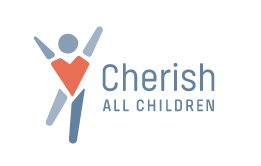
Online Safety & Harms of Pornography
Today's online world provides positive socialization, learning and engagement for youth. Unfortunately, it also includes significant risks – chatrooms and social networking sites can be used by traffickers to exploit or recruit vulnerable youth. Youth have more access to pornography than ever, leading to unrealistic idea expectations about sex.
Opening conversations with children and youth can help them identify risks and to promote healthy, safe interactions and relationships online. Below are several online tools, websites and social media tips we recommend for individuals, parents and youth. There is also a full session to teach youth about online safety in our Safe and Healthy Relationships Youth Guide.
Websites
ECPAT-USA is a national leader working to eliminate the sexual exploitation of children for over 25 years. Their online safety guides for youth, parents, and educators were developed specifically in the time of COVID-19 to support the increased challenges of this time.
LOVE146 is an international human rights organization working to end child trafficking and exploitation. Their online safety guide for youth and caregiver guide provide safety rules, warning signs to look for, information on sexting and sextortion, and what to do to stay safe online.
 Netsmartz is an interactive, educational program of the National Center for Missing & Exploited Children (NCMEC) that provides age-appropriate resources to help teach children, ages 5-17, how to be safer on- and offline.
Netsmartz is an interactive, educational program of the National Center for Missing & Exploited Children (NCMEC) that provides age-appropriate resources to help teach children, ages 5-17, how to be safer on- and offline.
Books
God Made All of Me: A Book to Help Children Protect Their Bodies, by Justin S. Holcomb & Lindsey A. Holcomb (2015)
Good Pictures, Bad Pictures: Porn-Proofing Today's Young Kids by Kristen Jenson and Gail Poyner. Glen Cove Press 2014
Good Pictures, Bad Pictures Jr: A Simple Plan to Protect Young Minds, by Kristen Jenson (2016)
The Impact of Pornography on Children, Youth and Culture, by Cordelia Anderson (2017) – A booklet highlighting research on pornography’s impact, shifts in culture and media, with information and resources to counter the harms and promote healthy sexual development.
Your Brain on Porn by Gary Wilson. Commonwealth Publishing 2014
Social Media Tips for Youth
- Set your page privacy settings so that your page is visible to friends only, and not to the general public.
- Be aware and thoughtful about what you are sharing. People can take screen shots or pictures of your posts, even temporary posts that disappear automatically, such as "Snaps" on Snapchat or "Stories" on Facebook, Instagram and Snapchat.
- Snapchat's Snap Map allows users to share their location with friends. Once users opt-in their location is updated whenever they are in the app. Youth should exercise caution.
- Do not share your address, phone number, bank or medical information via social media.
- Passwords exist to protect you and guard against things like identity theft. Never share them with anyone, not even a boyfriend, girlfriend, or best friend.
- Don't "friend" strangers. If you don't know someone, then it is best to deny their request to be friends on social media.
- If you see something online that does not seem right, talk to an adult you trust.
